A Visit to Wolverhampton,
1932
|
On April 24th, 1932 the famous railway
author and photographer, H. C. Casserley paid a visit to
Wolverhampton. The following pictures were all taken on that
day. |
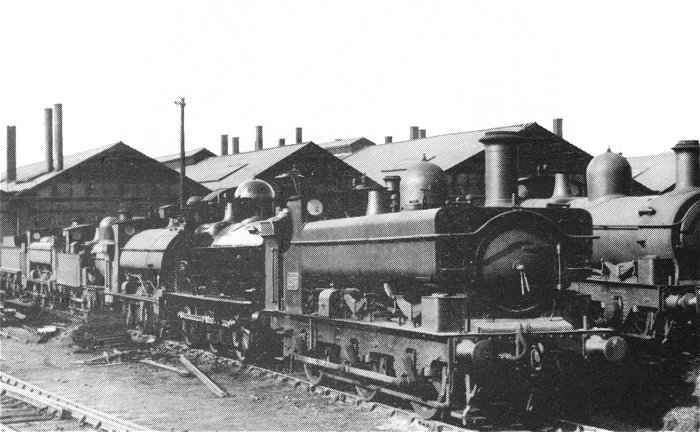
Two views from the Foxes Lane end of the
yard. The picture shows No. 1253, an outside framed 0-6-0
pannier tank, with Dean Goods 0-6-0 No. 2551 behind, fresh from
refurbishing at the works. Next in line is No. 2107, a
Wolverhampton built 2101 class saddle tank, followed by a Metro
class 2-4-0 No. 973. Bringing up the rear is another Stafford
Road built engine, No. 2120. |
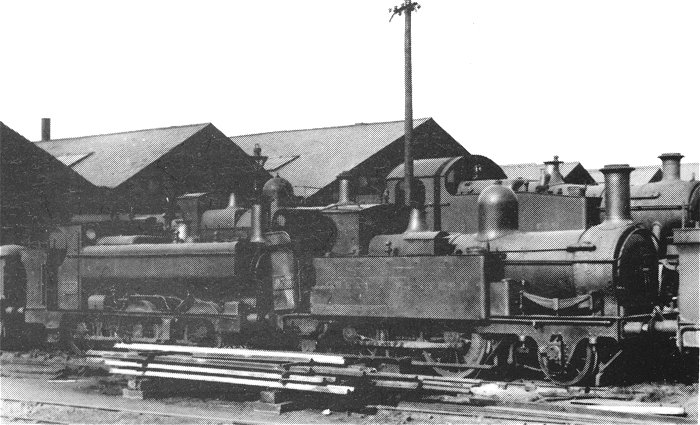
A view of the domeless raised Belpaire
boiler fitted to No. 2120. This engine was once used on autocar
working, being fitted with a matching dummy coach body. Notice
the damaged bunker on the "Metro", and the redundant bridge
rail, which was cut up and converted into fence posts and
boundary turret supports. |
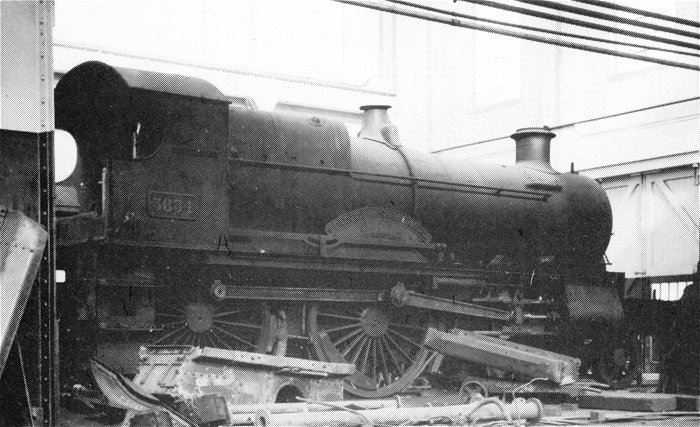
Inside the works was 4-4-0 County class
No. 3834 "County of Somerset". This was one of the last County
engines in regular use, and was also the last to be shedded at
Stafford Road, working each day to Leamington where it served as
the station pilot. It would work back with an evening train.
This engine was the only unlined example of the class in later
years and was withdrawn on November 11th, 1933. |
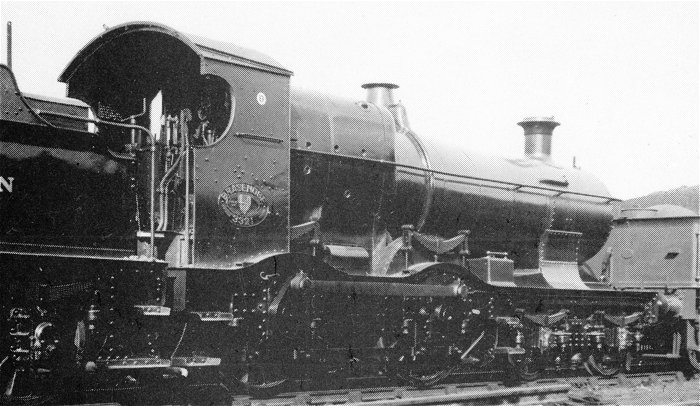
"Brasenose" was originally a member of the
Camel or Avalon class, but with the change to a taper boiler
became associated with the Bulldog class in later years. Though
re-numbered she retained the early pattern combined name and
number plate as seen here. |
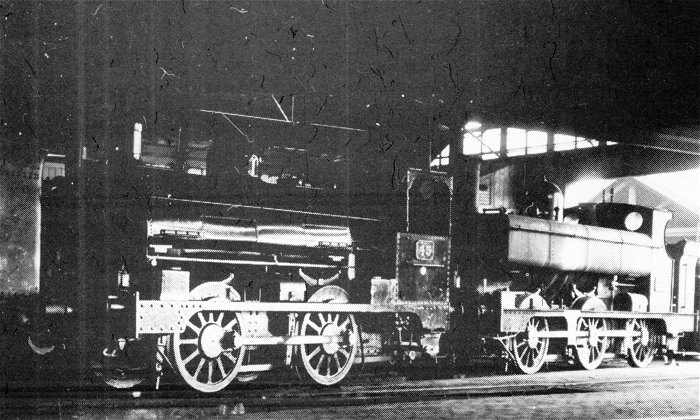
0-4-0ST No.45 is seen here in company with
a Wolverhampton built pannier tank inside Stafford Road. No.45
was built at Stafford Road in June 1880, and was always an
inhabitant of the G.W.R. Northern Division, based largely at
Croes Newydd shed. She was the only 0-4-0 tank to be fitted with
steam brakes, all others having the handbrake only. |
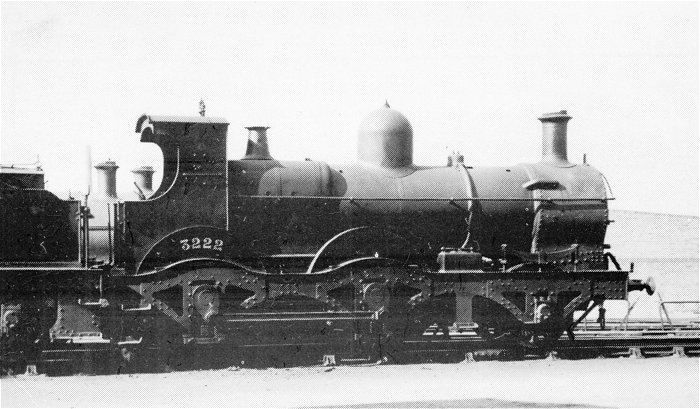
Barnum class 2-4-0 No. 3222 of
Wellington shed was at Stafford Road. No. 3222 was the last
of the class to be withdrawn on March 5th, 1937. |
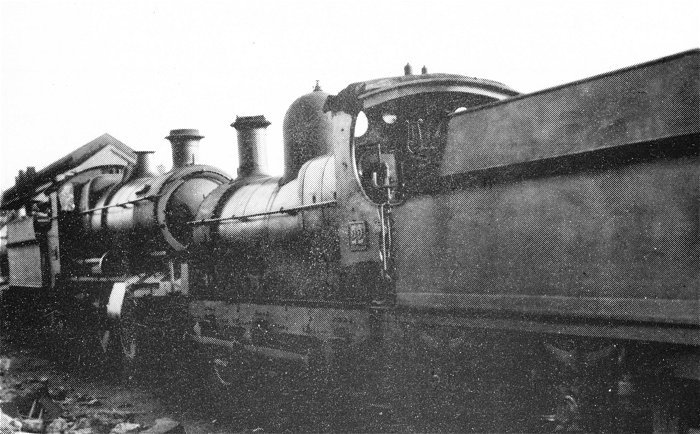
Armstrong 0-6-0 No. 22 is seen in
company with a 43XX 2-6-0 at Oxley. No 22 was officially
withdrawn in the following month. |
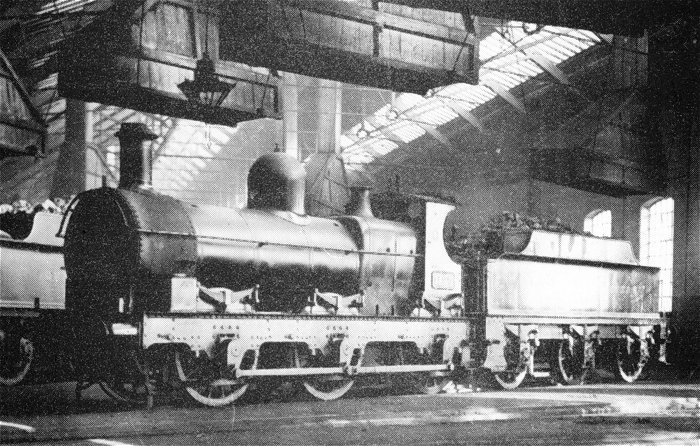
Armstrong 0-6-0 No. 1195 was on shed at Oxley. Built over
the years 1866-76 some 72 were still in service at the 1923
grouping. After the Great War the larger number of survivors
were to be found in the Wolverhampton Division of the G.W.R.
The largest number in any one area were allocated to Ox1ey,
the last such being numbers 22, 512, 689, 1094 and 1195. No.
1195 became the final working survivor of the class. |
 |
|
 |
|
 |
Return to
T. Bates |
|
Return to
the Beginning |
|
Proceed to
Dudley |
|